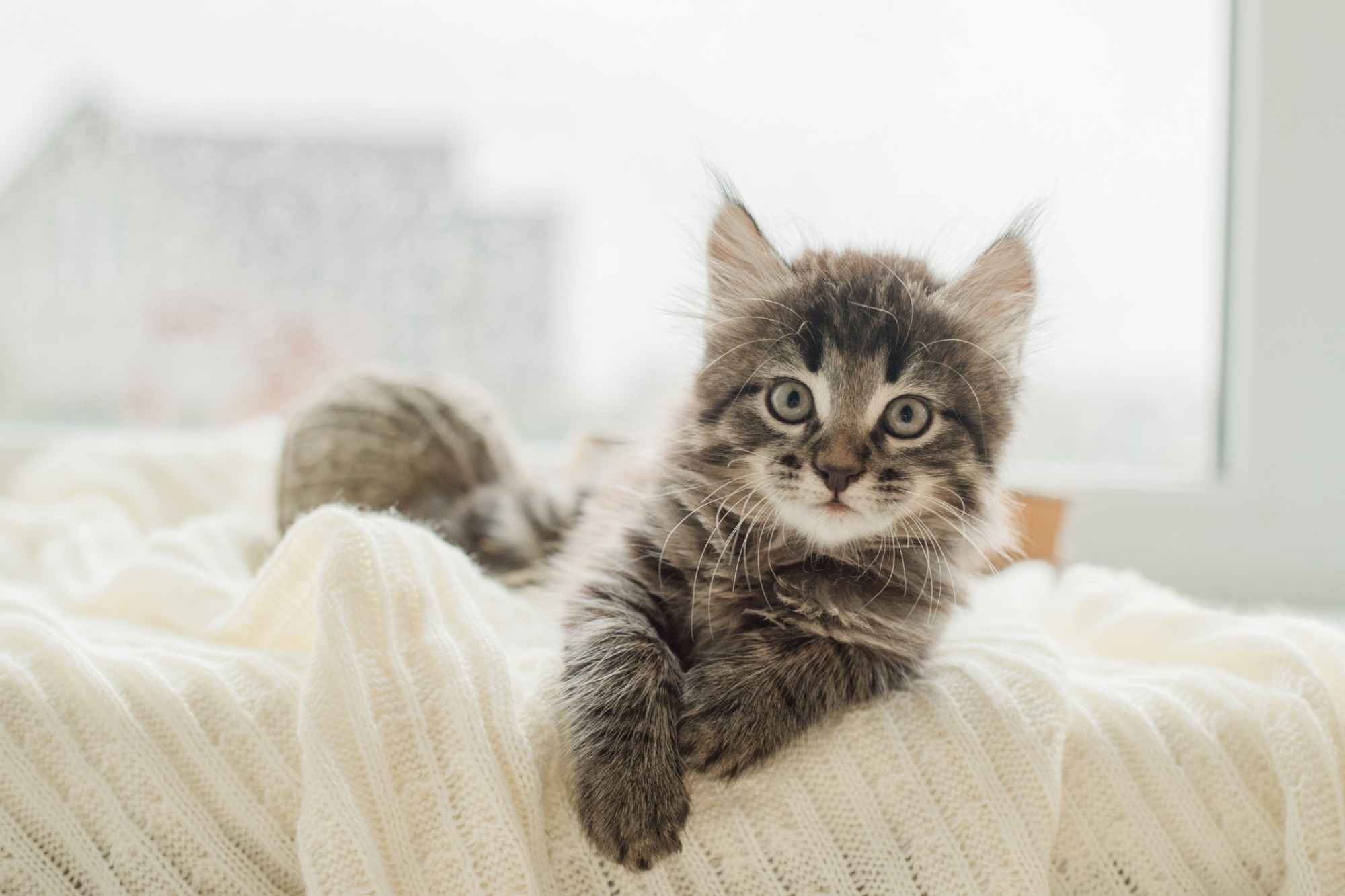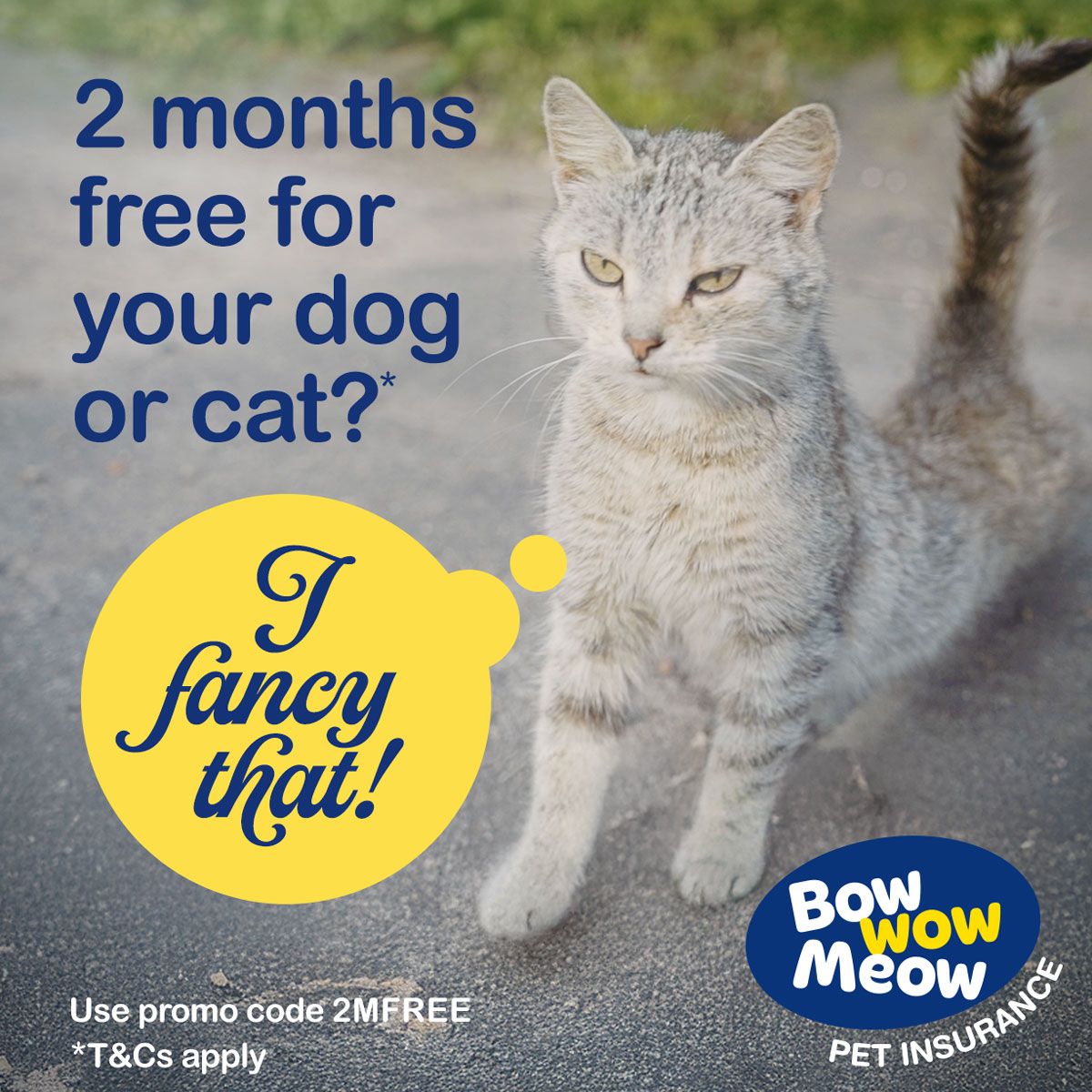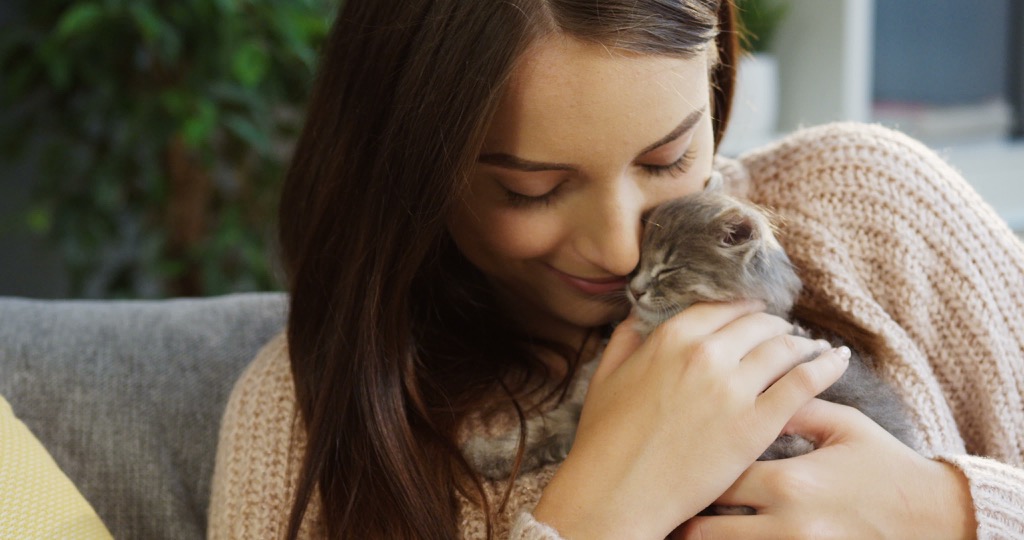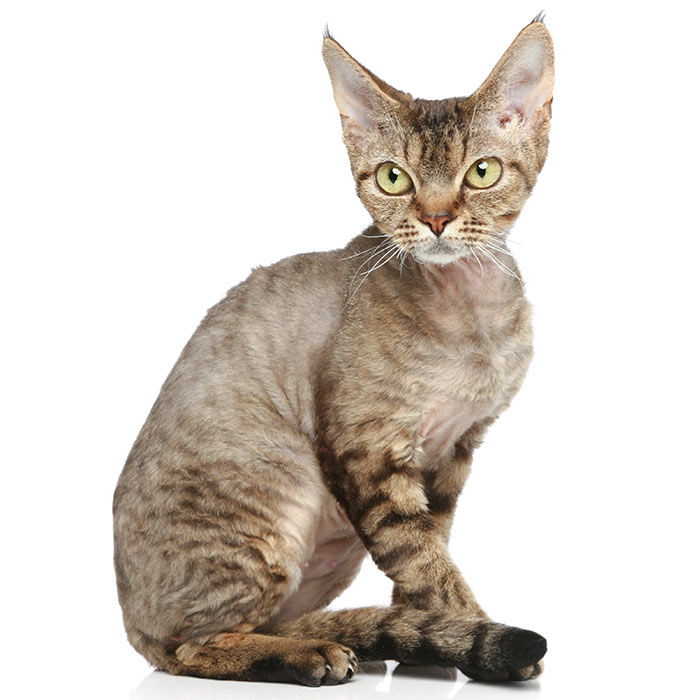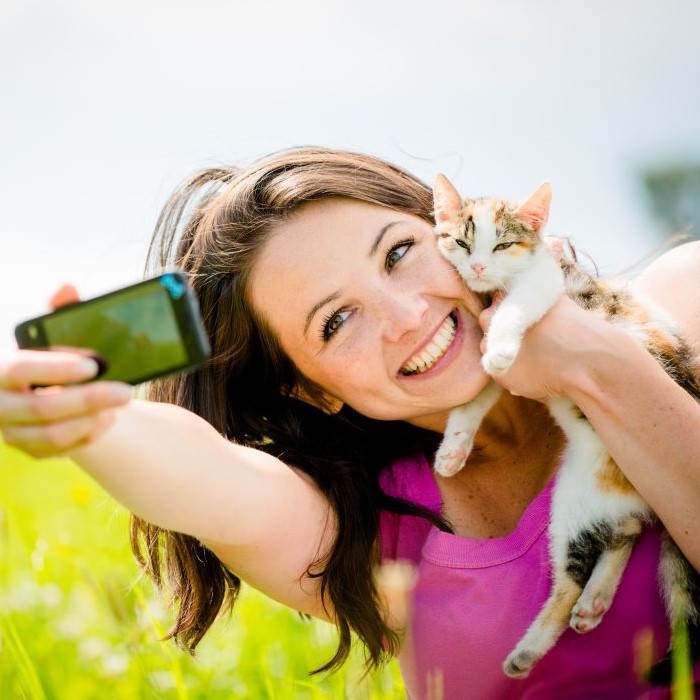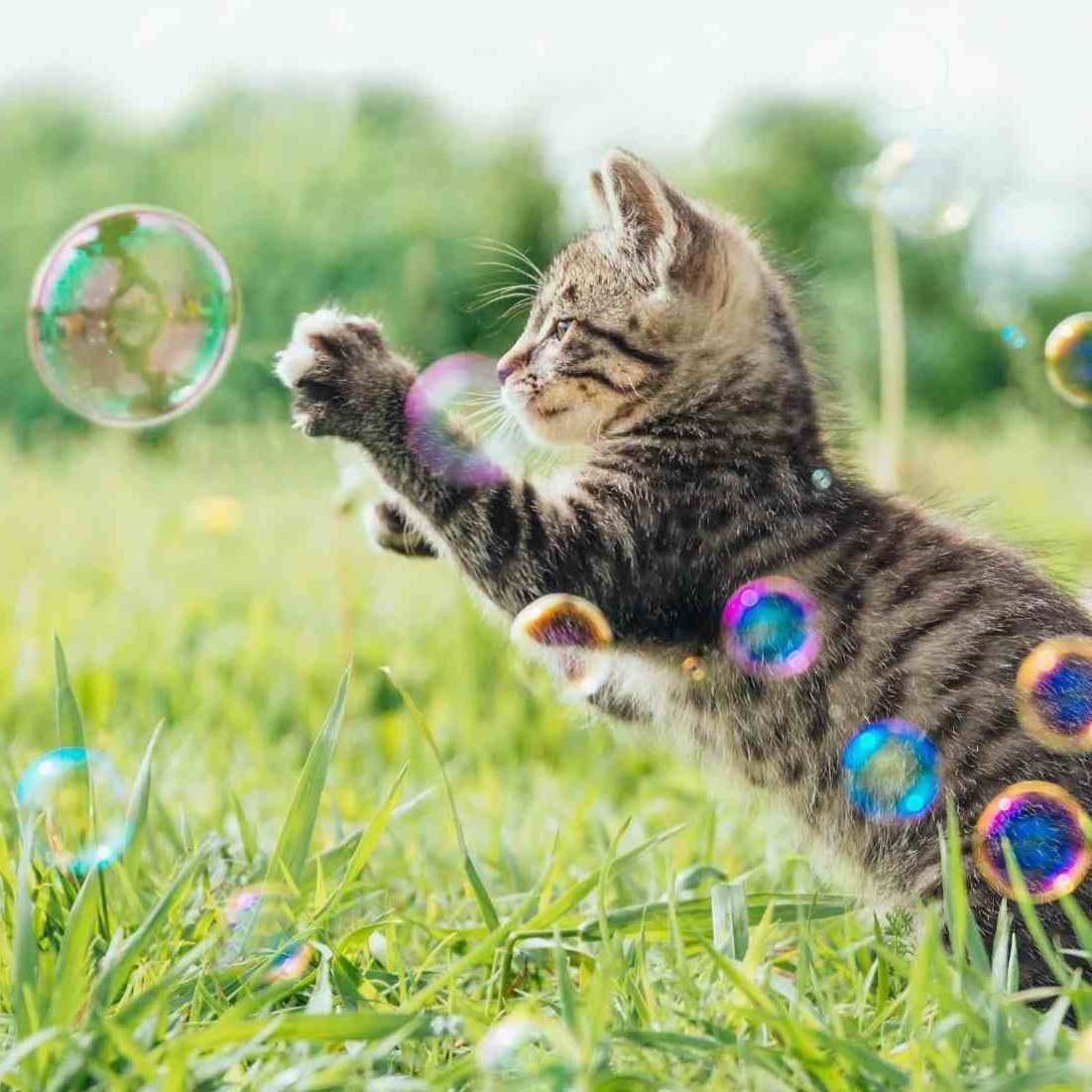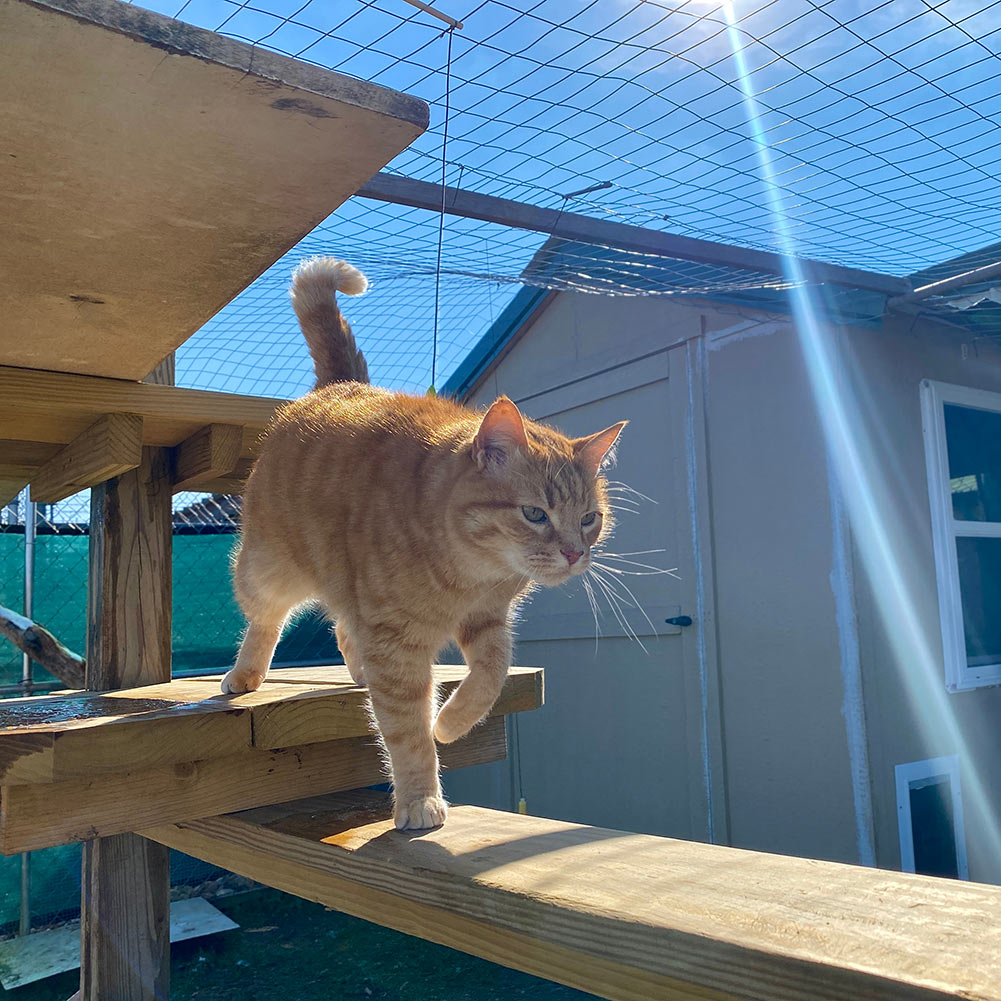The top 10 indoor cat breeds
More and more cat owners are choosing to keep their cats exclusively indoors. Not only is this because of the many dangers that cats can encounter outdoors – exposure to traffic, attacks from other animals, weather extremes, etc. – leads to a significantly shorter lifespan. Cats are hunters by nature, and outdoor cats pose a tremendous threat to native wildlife, including cats that are well-fed.
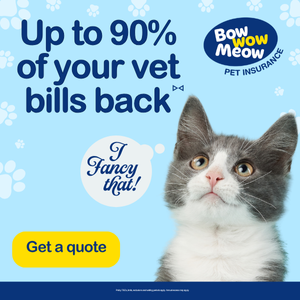 We already know what you’re thinking – can’t all cats live happily indoors? The reality is that cats with outdoor access are at much greater risk of injuries from falls, road accidents, snake bites or fights with other cats.
We already know what you’re thinking – can’t all cats live happily indoors? The reality is that cats with outdoor access are at much greater risk of injuries from falls, road accidents, snake bites or fights with other cats.
While all cat breeds can adapt to life indoors, especially if this is undertaken from an early age, some breeds as well as individual cats that are used to roaming freely outdoors, may find it difficult to adjust to a contained lifestyle. These cats would benefit greatly from having safe exposure to the outdoors – see our article The best outdoor runs and enclosures for cats.
On the other hand, there are a number of breeds that will do particularly well in an exclusively indoor environment. Some breeds, like the Devon Rex and the Scottish Fold, are great companions for those who live in apartments or smaller dwellings; these cats have the energy level and the temperaments to suit.
This list looks at the best cats for indoor living. We’ve compiled the best-suited house cats, listed from 1 to 10 with a short description of each.
It is important to be aware that indoor cats can also experience health issues, some of which can come with a a surprisingly high cost. From complex cancers to accidental injuries, such as fractures or foreign body ingestion, treatment can quickly become a major financial commitment.
Certain breeds, such as Tonkinese, Maine Coons, and Birmans, are more prone to these high-cost health issues, often needing advanced care or surgery. It’s a reminder of how unpredictable pet health can be, and why many cat parents choose to be prepared for the unexpected.
Find out more about cat insurance here.
1. Scottish Fold
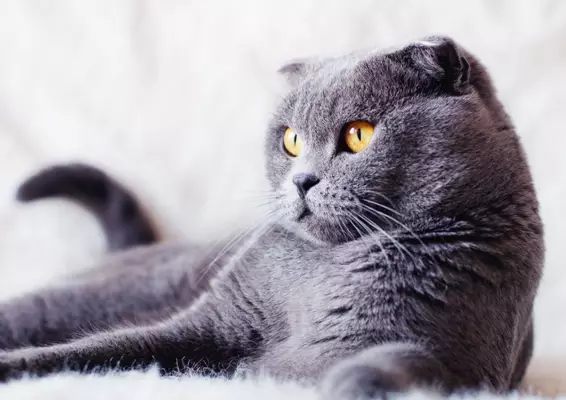
The Scottish Fold is a medium sized cat with a rounded body and unique ears that fold forward and down. The folded ears, along with a round face and large eyes, give the Scottish Fold an owl-like appearance. Interestingly, at birth the ears appear normal, but they fold over as the kitten begins to grow.
Ideally suited to indoor living, the Scottish fold has an easy-going nature and a great personality. Not much phases this cat and it is very adaptable and even travels well. It is the ultimate couch potato that fits in well in any household, even one with other animals and children. It is also inquisitive and bold – you may find it using its paws to open cabinets to find something to play with, playing fetch or sneaking food from its owner.
Male Scottish Folds weigh between 4 to 6kg and females weigh between 2.7 and 4 kg. Their average lifespan is 12 to 14 years.
Find out more about our cat insurance cover here
2. Burmese
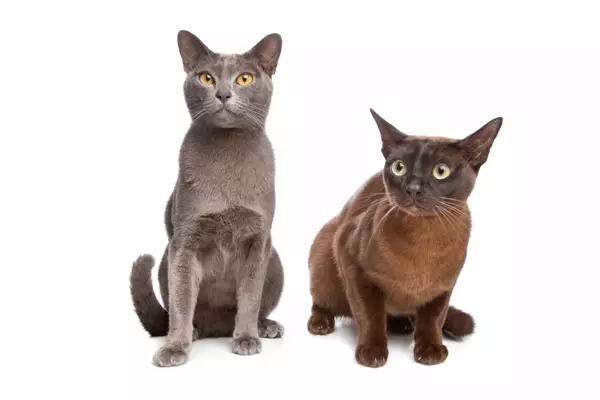
The Burmese is a strong, sporty cat that is simultaneously stocky and delicate. Despite their relative heaviness, they are elegant and graceful cats with strong muscles and good bone structure. Their coats are short, silky, and very low-maintenance.
Burmese Cats are intelligent, social and very playful, and love being indoors with their family. Almost like dogs, Burmese cats want to be involved in every aspect of their owners’ lives – they’ll follow you around while you do chores, cook meals and watch television. They have been known to even win over “dog people” because of their tendency to shower guests with attention and affection. Male and female Burmese cats can be quite different. Females tend to be very curious, active and emotional, while males are generally more relaxed and lazy.
Burmese don’t do well when left alone for a long time, unless they have another pet to keep them company. They get along well with children and other pets and make great companions for the whole family.
Burmese cats can weigh up to 5.5 kg and can live beyond the age of 15 years old.
Burmese cats are more prone than average to several health issues, according to the 2025 Pet Health Monitor:
- Eye conditions are more than twice as common, likely due to inherited traits.
- They’re more than twice as likely to develop arthritis, possibly linked to their stocky build.
- Renal problems occur nearly three times as often, making regular blood and urine tests important.
- Their playful, curious nature also means they’re almost twice as likely to swallow foreign objects.
- In Australia, there is a well-documented link between Australian-bred Burmese cats and the incidence of Type 2 diabetes.
3. Siamese
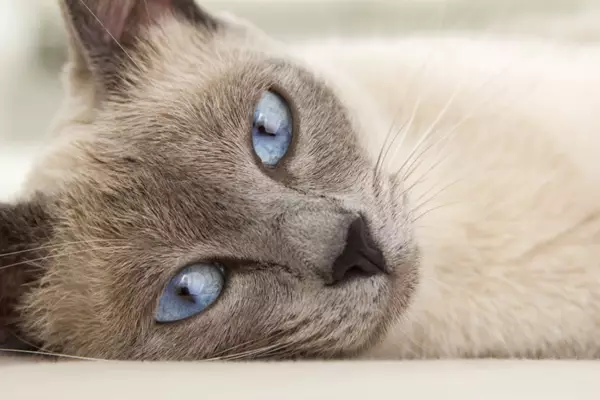
The Siamese Cat is one of the world’s oldest and most popular cat breeds. Its appearance is quite unique, with a light-coloured body and a darker face, paws, ears and tail. Its body is long and muscular, its eyes are large, almond-shaped and blue, its tail is long and thin, and its fur is short, soft, and silky.
Siamese Cats are highly intelligent, sociable and talkative – they have a deep, loud voice and enjoy “chatting” with their owners. They are often described as being “dog-like” in their capacity for affection and their fondness for playing fetch. And like dogs, they need lots of toys and playtime to keep their body and mind occupied.
While they are great indoor cats, the Siamese is so playful, entertaining and energetic that they require a great deal of human interaction to remain happy. They may not suit owners who leave them home alone for extended periods of time as they are prone to mischief if left to their own devices.
Male Siamese Cats weigh between 4 and 6 kg, while females weigh around 2.5 to 4.5 kg. Their lifespan is around 15 to 20 years, though some have been known to surpass this.
Unsure how serious it is?
Bow Wow Meow policyholders can get access to trusted vet care anytime, anywhere, at no additional cost. Connect to an experienced Australian registered vet via video call, 24/7. Whether it’s providing vet advice, setting up at-home treatment plans, or confirming if you need to visit a vet in person, you can get help when you need it.
Find out more about our pet insurance cover options.
4. Himalayan
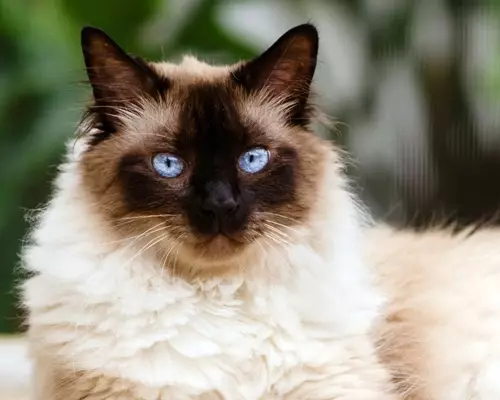
The Himalayan cat is a medium-sized cat that is descended from the Siamese and Persian breeds. It is very similar in appearance to the Persian in many of its physical features, such as a round body, short legs, and two facial variations: traditional (similar to the Persian), or peke-faced (named after the flat-faced Pekingese dog breed).
Possessing the best characteristics of the Siamese and Persian breeds, Himalayans make great indoor pets. They are loyal and affectionate creatures who require lots of attention and love, but tend to play favourites among their owners. They are very social, sweet and intelligent, and have been known to be quite talkative.
Their activity levels lie between those of the Siamese and Persian, so they are equally happy to play as they are to relax, making them great family companions.
Himalayans usually weigh around 5 kg, but females may weigh less and males may weigh more. They have a lifespan of 9 to 15 years.
5. Devon Rex
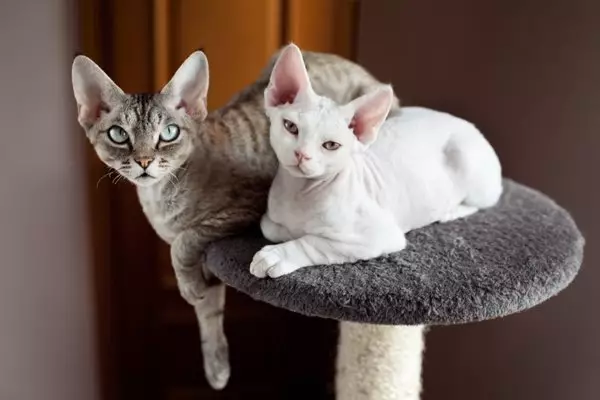
The Devon Rex is a unique-looking cat breed, characterised by a silky, wavy coat, large ears and eyes, prominent cheekbones and a short muzzle.
The Devon Rex is a very affectionate breed – these cats love to be around their owners and can even be seen on the shoulders of their loved ones. They are attentive and sociable and are happy to follow their family around the house as they go about their day.
Also incredibly intelligent, playful and active, the Devon Rex – sometimes referred to as “a monkey in a cat suit” – makes a great indoor cat. Unlike many cat breeds, the Devon Rex is highly trainable and can be taught how to walk on a leash, play fetch, and learn tricks such as sit and jump – much like a dog. They love to jump, so it might be a good idea to hide any breakables somewhere the cat can’t get to.
The Devon Rex is a relatively small cat, with males weighing 3 to 4 kg while females weigh between 2 and 3 kg. Their lifespan is 9 to 13 years.
Devon Rex cats are more susceptible to several health issues than the average cat, as per the Pet Health Monitor:
- Digestive problems occur more than 50% more often, making them one of the breeds most at risk of submitting a claim for gastrointestinal conditions.
- They’re more than twice as likely to develop ear conditions—likely due to their large, open ears that trap debris.
- Skin disorders are especially common, with rates more than three times higher, possibly linked to their fine, curly coat and delicate skin.
- Circulatory issues also appear more frequently, though the cause is unclear.
6. Birman
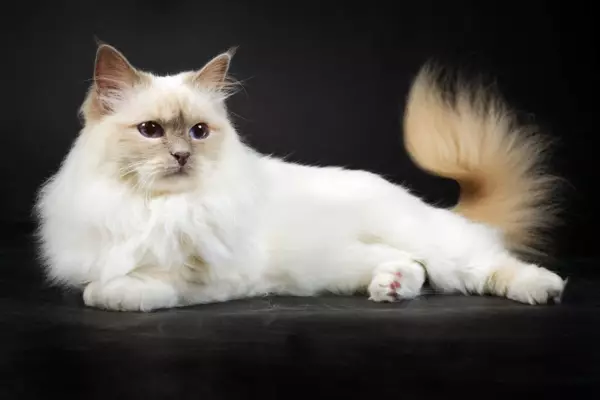
The Birman, also known as the “Sacred Cat of Burma”, is a unique-looking, medium-sized cat with round, deep blue eyes, long and silky fur, a rectangular body, broad face and Roman-shaped nose. With its gentle expression and loveable temperament, a Birman is a great option for those wanting a quiet, docile and affectionate indoor cat.
Birmans have a soft, quiet voice which they will use to alert you if they are hungry or need some attention. These cats love to cuddle and are content to relax with you on the couch. They like to follow their owners around and be involved, but are not bossy. They are very smart and curious and enjoy exploring their environment, which can land them in all kind of trouble!
The Birman typically weighs between 4 and 7 kg and the average lifespan is 12 to 16 years.
Birmans are more prone to the following high-cost health issues, often needing advanced care or surgery:
- Gastrointestinal conditions
- Ingestion of a foreign object
- Jaundice
- Gallbladder and bowel infection
7. Persian
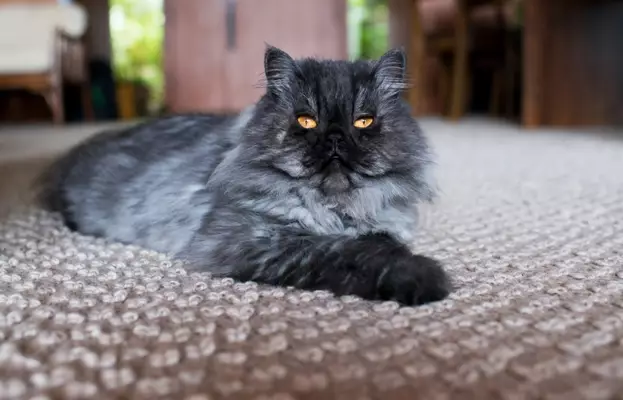
The Persian Cat is one of the oldest cat breeds in existence today. It is a muscly, heavy-boned, medium- to large-sized cat with short, thick legs, big paws, large shoulders, a short neck, broad chest, and relatively short tail. Persians have large heads with animated, wide-set eyes and a short nose.
Persians are known for having a gentle, quiet and docile nature. They are very sweet cats, but can be discriminating in their affection, only giving their attention to people they trust. They enjoy quiet environments, and for this reason aren’t recommended for noisy households, but they make great companions for older people and singles.
Persians thrive on consistency – regular meals and a little playtime is enough to satisfy them. They’re happy to relax on the couch or bed and watch you as you go about your day, and they don’t mind being left alone from time to time.
Persians can weigh between 4 and 8 kg. Their lifespan is 15 years and over.
8. Russian Blue
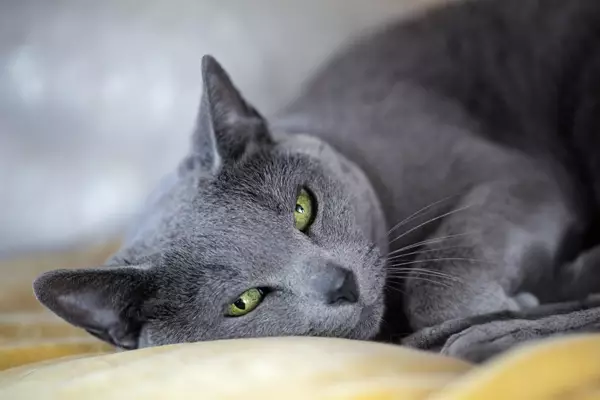
The Russian Blue is a is a medium sized cat that is unique, handsome and athletic in appearance. It has a striking, bluish-grey coat and a distinctive, deep bottle-green eye colour. Its fur is almost velvet like and does not shed heavily.
Russian Blues enjoy the company of their humans and will most likely follow them from room to room. They are ideal cats for families and don’t mind children at all, although they may choose a favourite in the family and stick to them. While they are comfortable with their own family, they may be a bit nervous and skittish around strangers.
Like a lot of other cats, the Russian Blue is a creature of habit and they love routine. They love being fed at the same time and following the routine of the family home.
This is a clever breed that can be trained to fetch and play games, but is also happy to spend some time alone and keep itself amused.
The average weight of a Russian Blue cat is 3.5 to 7kgs with male cats heavier than females. Their lifespan is about 15 to 18 years.
Russian Blue cats are more susceptible to several health issues than the average cat:
- They have slightly higher rates of digestive, urinary, and respiratory issues, with gut problems being especially common.
- Their urinary troubles may be linked to their sensitivity to stress or changes in routine.
- Eye, ear, and mild musculoskeletal issues are also a bit more frequent.
9. British Short Hair
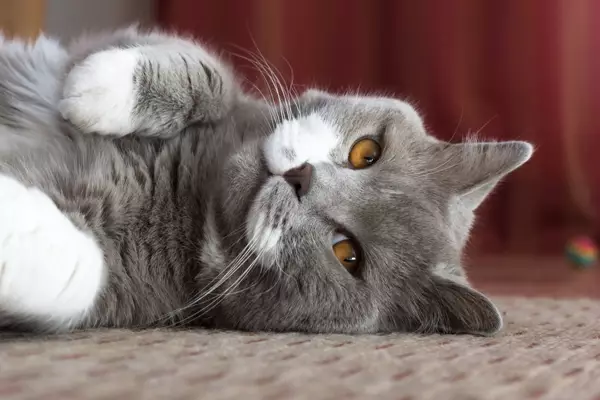
The British Shorthair is a medium to large-sized cat breed with a broad chest, short, muscular legs, round paws and a thick tail. Its head is round with large eyes and a short but broad nose. Its single coat is short and dense yet plush in texture.
British Shorthairs are easy-going, friendly and affectionate cats that make great family companions. They’re loyal and will follow their owners wherever they go, but they are not desperate for attention and are quite quiet. They are well-suited to being indoor cats as they do not possess the curiosity of other breeds that so often gets them into trouble, nor are they likely to wander off.
Very energetic and playful as kittens, British Shorthairs tend to calm down around the age of 1, and as they become older can become couch potatoes.
Frequently referred to as “gentle giants”, they tend to be rather large cats, usually weighing around 7 kg, though some can weigh as little as 4 kg and some as much as 9 kg. Their lifespan is 14 to 20 years.
According to the 2025 Pet Health Monitor, British Shorthairs…
- Are more prone than average to gastrointestinal, eye, and ear issues, likely due to their facial structure and genetics.
- Eye and ear problems occur at more than twice the typical rate, with digestive troubles also more common.
- They also face higher rates of infections, such as cat flu or feline upper respiratory tract infection (URI) and feline infectious peritonitis (FIP), and heart conditions, such as
murmurs and cardiomyopathy.
10. Ragdoll
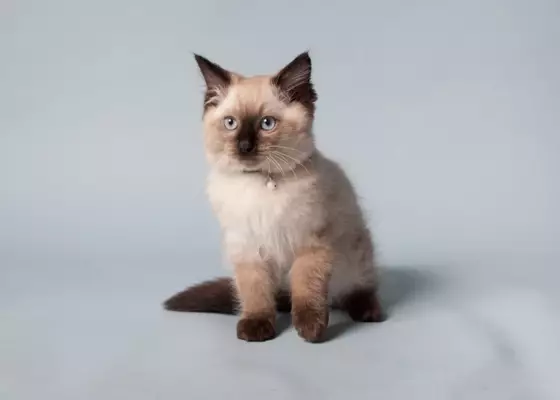
The Ragdoll is one of the world’s most popular breeds of cat, but it is also a relatively new breed. Ragdolls are born completely white and their face, ears and tail darken as they age. Their large, wide-set eyes are a striking blue colour. Their coat is quite long and silky, and lies smoothly on the body. They are one of the larger cat breeds, with a muscular body, well-developed cheeks and medium-sized ears.
Ragdolls are extremely laidback and placid – they were named after their tendency to go limp when picked up because of their relaxed nature. They are playful and quite easy to train, and will greet you when you arrive home and follow you around the house.
Ragdolls love the company of humans and never stray too far from their family; however they are strictly indoor cats and should only be allowed outside if on a leash or in an enclosed area. They have been known to be almost dog-like in their sociability, and get along great with other people, children, and pets. Unlike many cats, the Ragdoll doesn’t like to be left alone.
Ragdolls weigh between 4.5 and 9 kg and live up to around 15 years old.
FAQ
What makes a cat breed one of the best house cats?
The best house cats typically exhibit traits such as a calm demeanour, high sociability, and adaptability to indoor environments. Breeds such as the British Shorthair and Ragdoll are popular as house cats because of their friendly nature and low maintenance requirements. These cats usually thrive in family settings and adapt well to living exclusively indoors, making them excellent companions for those residing in apartments or without outdoor access.
Which indoor cat breeds are known for being particularly affectionate?
When it comes to affection, the best indoor cats are those that enjoy human company and are often lap-friendly. The Ragdoll is renowned for its affectionate behaviour, often seeking physical closeness with its owners. Similarly, the Scottish Fold has a gentle, loving nature and enjoys interacting with its family. These breeds are ideal for those seeking a close bond with their cats in an indoor environment.
Are there any best house cats for families with allergies?
Yes, there are several best house cats suitable for families with allergies. The Siberian cat, despite its long fur, produces less of the common allergen Fel d 1, and many allergy sufferers report fewer symptoms with this breed. Additionally, hairless breeds like the Sphynx are often considered good choices for allergy-prone households as they lack fur, which is where most allergens are spread.
How do the best indoor cats adapt to small living spaces?
The best indoor cats for small living spaces are typical breeds with lower energy levels and a contented disposition when indoors. Breeds like the British Shorthair and the American Shorthair are known for their easy-going nature and ability to adapt well to smaller environments. They do not require extensive space to roam and can be quite content lounging around the home.
What are the grooming needs for the best house cats?
Grooming needs vary among the best house cats. For instance, the Persian cat requires daily grooming to maintain its long, luxurious coat and prevent matting. On the other hand, short-haired breeds like the American Shorthair are much lower maintenance, needing only occasional brushing. Understanding the grooming requirements of the breed is essential for maintaining their health and hygiene.
Can the best indoor cats also be energetic and playful?
Absolutely! While many of the best indoor cats are calm and composed, breeds like the Abyssinian and Siamese are known for their playful and energetic nature. These cats are highly intelligent and require mental stimulation through interactive toys and games, making them suitable for owners who can dedicate time to engage with their pets actively.
What should potential owners know about the health care of indoor cat breeds?
Prospective owners should know that while indoor cat breeds are generally safer from external threats, they can be susceptable to certain health issues thanks to their indoor lifestyle. Obesity can be a concern due to reduced physical activity, so maintaining a proper diet and exercise regimen is crucial. Regular veterinary check-ups are essential to monitor their health conditions and manage any breed-specific issues that may arise.
Bow Wow Meow Pet Insurance can help protect you and your cat should an unexpected trip to the vet occur.
-
Find out more about our cat insurance options
-
Get an online pet insurance quote
Bow Wow Meow is proud to have been awarded winner of Canstar’s ‘Most Satisfied Customers’ Award in the Pet Insurance category for both 2024 and 2025!
Bow Wow Meow is proud to have been chosen as Product Review’s Pet Insurance Award Winner every year from 2018 to 2025! This is based on 2,995 independent customer reviews (as at 21/01/2025), with an overall rating of 4.3*
Google Review rating = 4.5* (based on 968 reviews)
Trust Pilot rating = 4.6* (based on 531 reviews)
Bow Wow Meow is proud to have been chosen as Product Review’s Pet Insurance Award Winner every year from 2018 to 2025! This is based on 2,995 independent customer reviews (as at 21/01/2025), with an overall rating of 4.3*
Google Review rating = 4.5* (based on 968 reviews)
Trust Pilot rating = 4.6* (based on 531 reviews)
Bow Wow Meow has been chosen as a winner in the Finder Pet Insurance Awards 2024. Finder’s panel of experts analysed over 140 quotes to award our Ultimate Care Plan the winner of the “Pet Insurance – Value” category.

